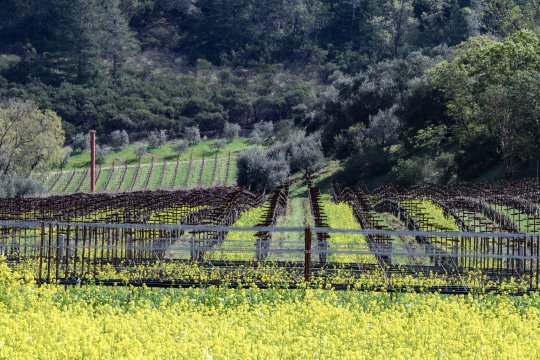When and how should the green manure be incorporated?
The destruction of the manure depends on the objectives. Mowing and shredding in the spring will destroy the above-ground parts and allow them to dry out. The presence of green manure increases the risk of spring frost. This parameter should be considered when determining the destruction date.
Mowing is worthwhile when the vegetation is not fully developed or to make mulch and maintain the soil without chemical weeding or tillage. The advantage of mulching compared to shredding is that it slows down the mineralization of organic matter, reducing the risk of nitrogen deficiencies and avoiding setbacks for the vines. An alternative solution consists in using a specific piece of equipment called a rolofaca which enables the plant cover to be laid on the ground and be pinched so as to stop the rise of the sap. Unlike shredding or mowing, the cover's growth is stopped and the "pinched" part breaks down very slowly. This mulch allows nutrients to be returned to the soil. It protects the soil, has a good water retention capacity and improves the soil structure. On a sloping plot, this type of practice can make it difficult for tractors to get a good grip.
Burying the plant cover is optional and depends on objectives: it allows a rapid release of nitrogen which is then available for the current season. Burial of plant cover should be carried out taking into account how damp it is, and should never be done on wet soil. If it is done one to two days after mowing or shredding, decomposition will be rapid with significant mineralization. It may be advisable to let it dry for 30 to 60 days. Burying is then done in one or two stages depending on the species either with a toothed or disc tool.
| Species | Grinding | Stubble cultivation/ | Rolling | Destruction time frame |
|---|
| | Infiltration | | |
| Faba beans | + | + | ++ | Remove at the end of flowering. After the seeds emmerge there are risks of parasites and therefore a decrease in biomass, |
| Winter oats | - | + | - | Just prior to flowering when the plant has a maximum nitrogen amount stored but is still tender, facilitating decomposition. Rolling should not be done before heading |
| Mustard | ++ | ++ | ++ | Remove at the beginning of flowering |
| Barley | - | + | - | Remove just before flowering to avoid lignification of the tissues, rolling should not be done before heading |


